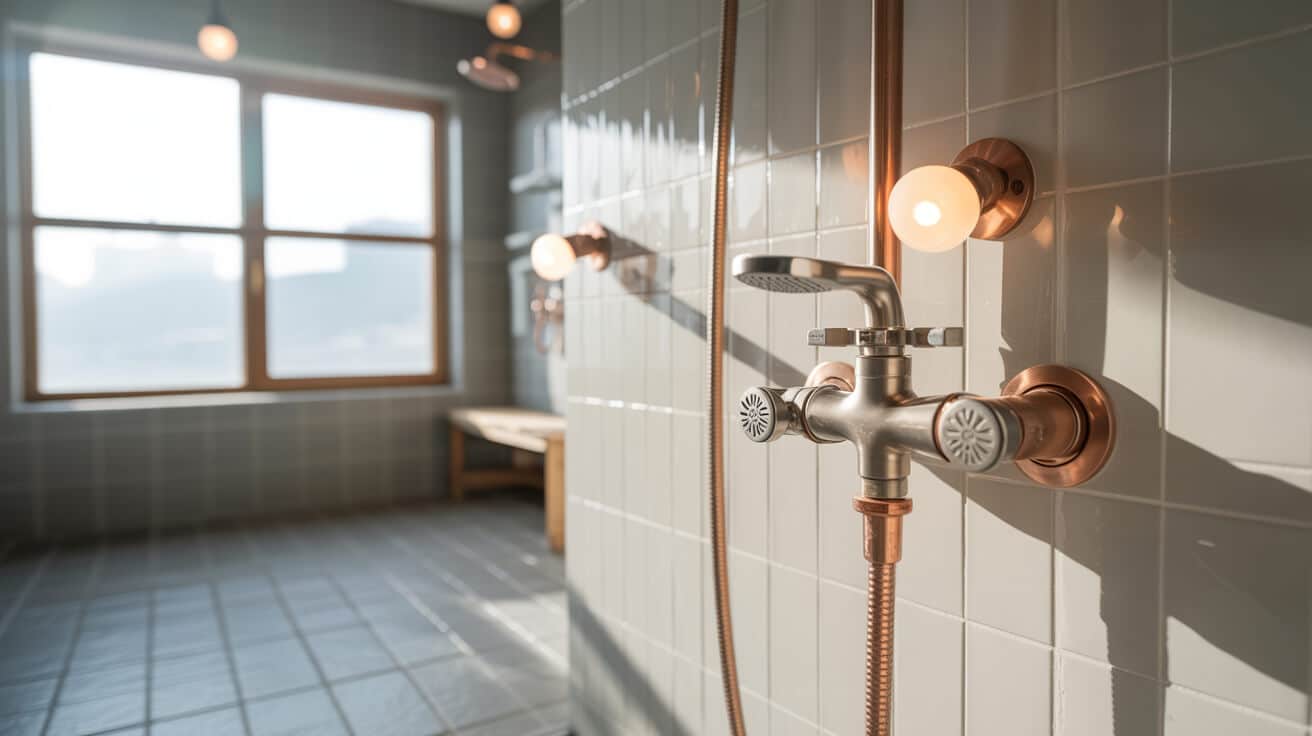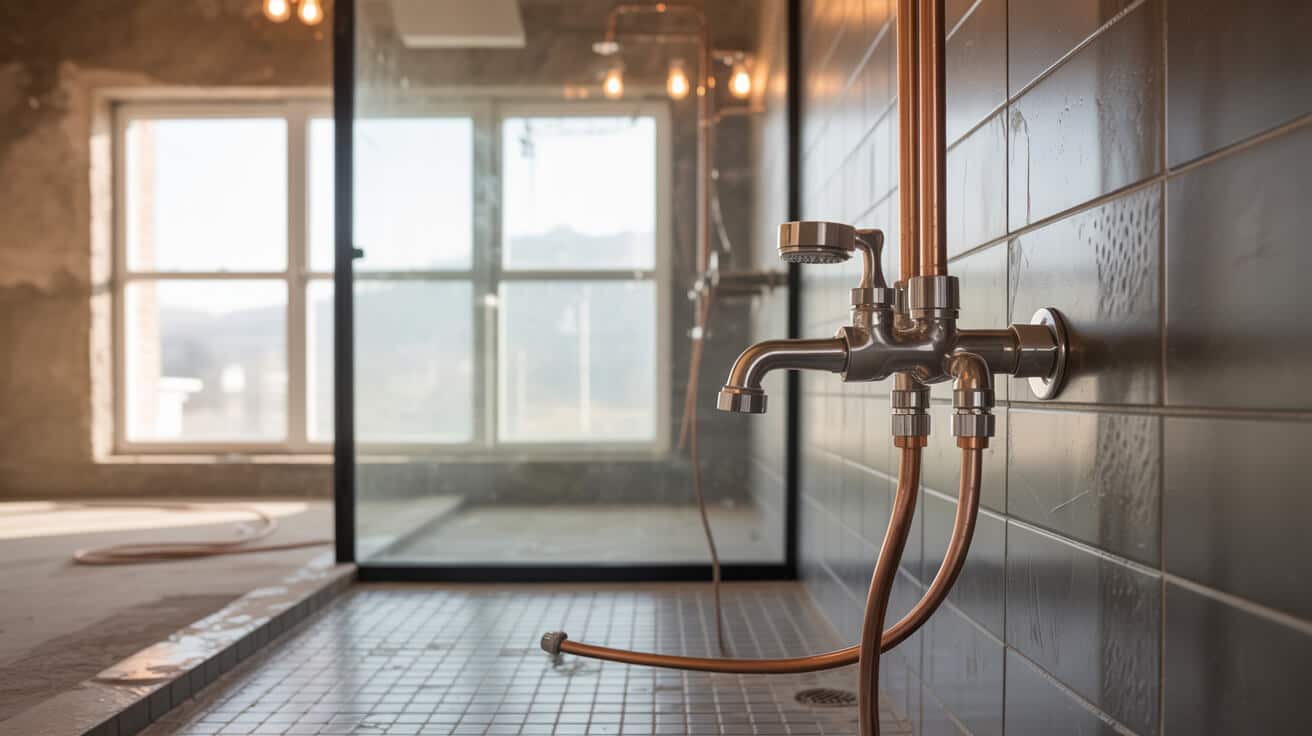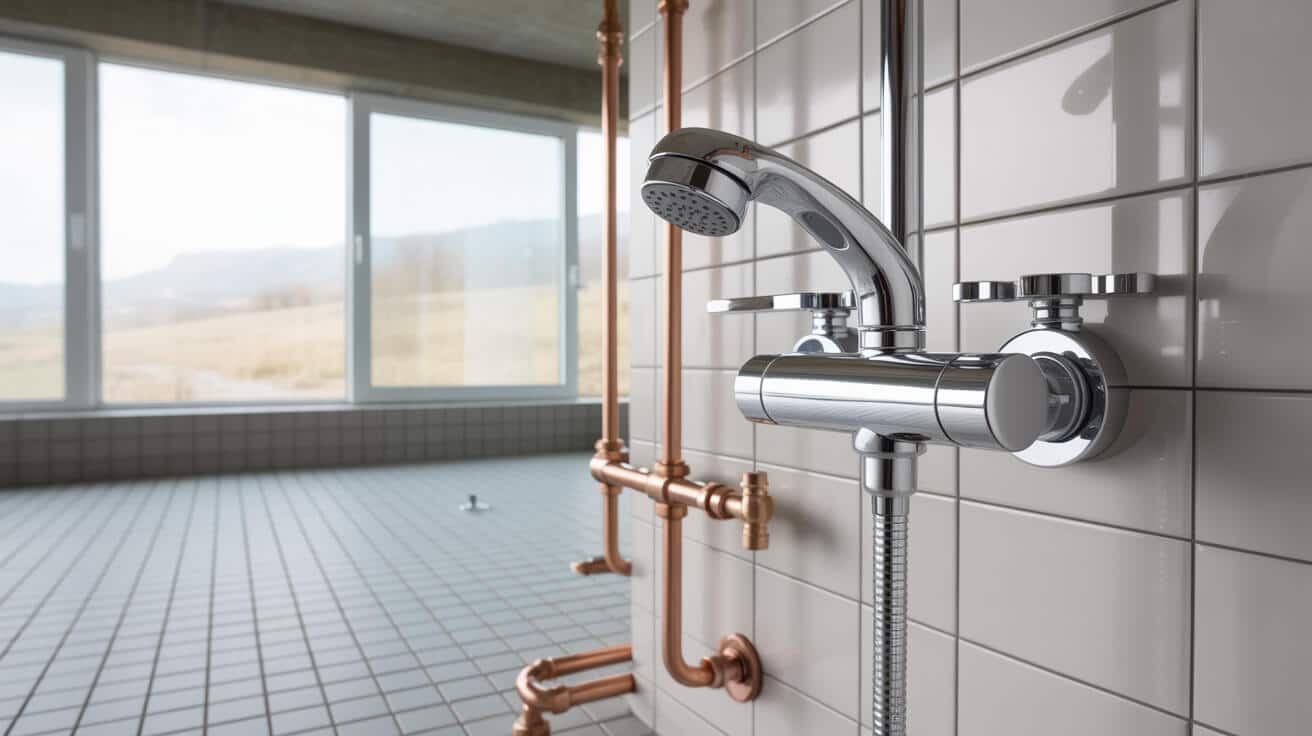Wet rooms represent the evolution of the contemporary bathroom, fusing advanced waterproofing, engineered gradients, drainage technology, and specialised heating integration into a coherent, risk-managed system. A properly installed wet room empowers your household, business, or managed property to pursue greater inclusivity, hygiene, and ease of maintenance with long-term resilience. Plumbing and heating companies, such as Plumbers 4U, have become essential to the delivery of these systems, seamlessly coordinating substrate preparation, drainage, tanking, surface finishes, heating, and ventilation in accordance with stringent regulatory codes and performance standards.
Etymology or name origin
The phrase “wet room” can be traced to late 20th-century architecture and trade literature, distinguishing itself from conventional “shower rooms” by emphasising the continuous, undivided treatment of space and surfaces. Its rise in use corresponds with both Scandinavian and broader European movements for barrier-free design and universal access, later codified in UK guidance and building regulations. Today, “wet room” denotes a specific technical outcome: an area in which all surfaces are designed to accommodate free-flowing water without risk of structural ingress or user hazard.
Overview / context
Wet rooms are defined by their absence of step, lip, or tray, using an all-encompassing “tanked” system to direct water exclusively into integrated drains. Occupying roles in new construction and retrofitted spaces, wet rooms deliver distinct performance and compliance benefits across property categories:
- Residential properties: Enable minimalist design, open access for mobility aid users, and simplified cleaning for homeowners.
- Hospitality settings: Provide high-throughput, easy-maintenance spaces for hotels, spas, and gyms.
- Healthcare and social housing: Meet stringent standards for infection control, patient transfer, and accessible showering.
- Rented and managed housing portfolios: Reduce insurance risk and maintenance overhead through engineered durability.
Building services integration—plumbing, heating, ventilation—must be precisely managed to ensure leak-free performance and longevity. Wet rooms are often championed by designers and property managers for their adaptability, hygienic potential, and compliance with the UK’s evolving accessibility and water management codes.
History
Origins
Archaeological and textual records identify ancient Mediterranean and Scandinavian practices of open, barrier-free bathing space, which resolved hygiene and ritual needs though rough-surfaced stone, natural gradients, and communal arrangements. With industrialization, European public and healthcare buildings adopted elements of these designs for mass sanitation and disability accommodation.
Industrial emergence
The emergence of the “wet room” as both a concept and legal classification accelerated in the UK alongside postwar housing renewal and healthcare legislation. Innovations in waterproof membranes, drainage hardware, and prefabricated floor slopes enabled commercial rollout beyond institutional settings. Plumbing and heating firms began offering coordinated, turn-key wet room packages by the late 20th century, integrating layered tanking, advanced adhesives, and bespoke gradient solutions.
Contemporary evolution
In the 21st century, digital product design, Building Regulations, and consumer preference for luxury and barrier-free environments have further energised the wet room model. Modern systems employ proprietary membranes, modular drainage cassettes, point and linear drains, underfloor heating integration, app-controlled thermostats, and robust surface finishes. The emphasis has shifted towards lifecycle reliability—embodying practices that anticipate long-term use, adaptation, and evolving compliance.

Concept / description
A wet room comprises a single, contiguous waterproof plane formed through coordinated substrate preparation, tanking, and surfacing. Its defining structure includes:
- Substrate: —timber, concrete, composite, or hybrid flooring, levelled and pitched for water management.
- Gradient/falls: —engineered to at least 1:40 slope, guiding all water flow to the chosen drainage point or line.
- Waterproofing membrane (tanking): —liquid or sheet systems enveloping floor and significant wall zones, extending to all splash-risk areas.
- Drainage assembly: —linear drains for large or elongated rooms, central point drains for compact spaces; both with integrated traps and backflow prevention.
- Surface finishes: —non-porous tiles or heavy-duty vinyl, laid with flexible adhesives and epoxy grout.
- Heating integration: —electric mats or wet-pipe underfloor systems, supporting controlled evaporation and occupant comfort.
- Ventilation: —humidity-triggered extraction, smart fan systems, or passive stack venting to inhibit condensation and mould.
- Fixtures and fittings: —wall-hung toilets, minimalist sinks, fold-down rails, digital shower panels.
Configuration examples
- An open wet room with a floor-to-wall tanked envelope, linear drain at the main splash zone, and concealed underfloor heating.
- A “zoned” adaptation with a walk-through shower, half-height glass, localised tanking, and hybrid point drain for minimal impact retrofits.
- Modular pod-based wet rooms for rapid new-build or institutional construction.
Functionality / purpose / applications
Wet rooms are engineered for both universal access and high-throughput cleaning.
Functions
- Containment of moisture: Reliable exclusion of water from substructure and adjacent rooms, even under daily heavy usage.
- Facilitation of accessibility: Level thresholds, wheelchair compatibility, and easy transfer for users with impaired mobility.
- Ease of cleaning and maintenance: Flush-finished surfaces and reduced junctures for microbial accumulation.
- Improved property value: Contemporary appeal for homebuyers, regulatory compliance for rental/managed assets.
Application domains
| Application type | Unique requirements | Common installations |
|---|---|---|
| Private Homes | Aesthetic customisation; family use | bathroom renovation, new build |
| Rental Properties | Robustness; ease of tenant turnover | Single/Multi-unit rental blocks |
| Healthcare / Care | Infection control; DDA/Part M compliance | Hospital, assisted living |
| Hospitality | Durable easy-cleaning; luxury touchpoints | Hotel, spa, gym |
| Adaptation Retrofit | Minimal structural impact; guarantee | Social housing, heritage build |
Classifications / types / variants
Substrate classifications
- Timber: Requires reinforcement and sheet decoupling for movement control.
- Concrete: Allows in-situ slopes, offers high load bearing, but limited reworking after installation.
- Hybrid: Composite and modular substrates designed for speed, rotation, or pod-based construction.
Drainage and layout variants
- Linear drain: Facilitates wide, open-plan layouts, minimises complex tiling, often placed against wall.
- Point drain: Centralised, multi-directional fall, effective in compact footprints or when retrofitting.
- Thresholded or partial wet rooms: Employ screens or low-rise partitions for spray containment while retaining level access.
- Fully open wet rooms: Maximise accessibility, spatial efficiency, and cleaning.
System intent
- Luxury: High-design, app-enabled controls, niche or illuminated drains, custom finishes.
- Accessible: Built to rigorous inclusive standards; grab rails, colour contrast, guiding tactility.
- Commercial/durable: Modular, prefabricated, designed for operational robustness.
Systems / tools / methodologies
Waterproofing and tanking systems
- Liquid membranes: Applied using roller, brush or spray for seamless coverage, rapid curing.
- Sheet membranes: Factory-controlled thickness, pre-bonded overlap zones, high mechanical resistance.
- Hybrid/integrated kits: Blend membrane, adhesive, and drainage in one manufacturer-validated workflow.
Drainage technology
- Trap types: Shallow or deep seal, self-cleaning, rodding eye inclusion for maintenance.
- Anti-backflow valves: Block sewer reversal, especially in below-grade or high-risk instals.
Heating systems
- Electric underfloor mats: Rapid response and zonal control, typically for domestic/small commercial.
- Wet/pipe systems: Feed from central plant or dedicated manifold, ideal for multi-room or large footprint.
- Smart integration: Thermostat zoning, remote scheduling, adaptive learning.
Tools and installation methods
- Floor-forming screed floats
- Leak and pressure testers
- Grading lasers
- Electric tile cutters
- Sealant application kits
| System | Legacy approach | Modern methodology |
|---|---|---|
| Substrate prep | Nailed timber, ad hoc pitch | Precision-former, laser-checked |
| Tanking | Manual bituminous layers | Sheet/liquid hybrid, warranty system |
| Drain | Single-centre trap, no rodding | Point/linear, rodding eye, antiback |
| Heating | Surface mats, basic stat | Digital/zone/app, under- & in-pour |

Stakeholders / entities involved
Stakeholders
| Stakeholder | Function in process |
|---|---|
| Plumbers 4U (Company) | Design, installation, end-to-end system guarantee |
| Architect/Designer | Space planning, accessibility layout, material select |
| Building Contractor | Structural works, substrate forming |
| Waterproofing Specialist | System selection and tanking installation |
| Tiling & Finishing Contractor | Surface prep, movement joints, final finish |
| Building Control Officer | Inspection of critical stages, compliance signoff |
| Homeowner/Resident | End use, operations, cleaning, warranty management |
| Landlord/Facilities Manager | Maintenance scheduling, regulatory compliance |
Standards Bodies
- CIPHE: (Chartered Institute of Plumbing and Heating Engineering)
- WRAS: (Water Regulations Advisory Scheme): Promotes compliance for products and installation
- WaterSafe: Accredits quality trades
- TrustMark/CSCS: Assure professional accreditation and site safety
Legal / regulatory / ethical considerations
Statutory codes (UK-specific)
- Part G: Water safety, prevention of contamination, minimum temperature settings.
- Part H: Domestic water waste, prevention of ingress, rodding access.
- Part L: energy efficiency in plant and systems, underfloor performance standards.
- Part M: Accessibility, level-access minimums, DDA.
- Part P: Electrical safety for water-prone areas.
Organisational and product standards
- WRAS-Approved Products: Only permit certified materials—membranes, adhesives, fittings.
- WaterSafe-Certified Installers: Verification required for system compliance.
- Manufacturer Documentation: benchmark logbook, maintenance, and warranty paperwork.
Management and duty of care
Landlords, property managers, and organisations are legally obliged to maintain leak-free, compliant spaces; remedy hazards quickly; and provide supporting documentation for all major upgrades or failures.
Performance metrics / data / measurements
Waterproofing
- Flood/pressure test: Confirm integrity of tanking pre-tiling and pre-handover.
- Inspection points: Documented at instal, annually, and after reported leaks.
Drainage
- Slope compliance: Laser or spirit level tested (usually 1:40 min).
- Drain flow: Measured under maximum anticipated load (litres per minute).
- Maintenance access: Rodding eyes positioned for rapid unblocking.
Heating and compliance
- Thermal response: Underfloor or towel rail reaches target temperature in set time.
- Energy use: Captured in EPC ratings or independent energy performance reviews.
Accessibility
- Thresholds and spaces: Documented no-step access, turning radii, and support placements.
Challenges / barriers / limitations
Technical/operational risks
- Leakage: Main source is defective or unverified tanking, especially at wall/floor junctions and penetrations.
- Pooling: Culprit is misjudged gradient or excessive span between drain and fall line.
- Component failure: Age-related or accidental damage to membranes, heating elements, drains.
Maintenance and repair
- Routine checks: Regularly scheduled for managed properties.
- Commercial/communal spaces: Require higher frequencies, documented logs, and rapid-response providers.
- Homeowner confusion: Unfamiliar with hidden maintenance needs, underscores importance of handover documentation.
Legal/accountability complications
- Warranty voidance: Caused by unauthorised repairs, skipped logbook entries, or out-of-spec product use.
- Insurance refusal: Stemming from non-compliance or ambiguous installation records.
Impact / influence / legacy
Accessibility and value impact
- *Increased usability*: Enables safe, dignified use by elderly, disabled, and general populations.
- *Regulatory preference*: Meeting Part M, DDA, and modern social housing standards.
Ownership and management impact
- *Property value uplift*: Seen as premium, future-proofed adaptation; attracts buyers/tenants seeking modern living and compliance.
- *Trust and branding*: Drives expectations for higher standards, warranty, consistent performance.
Industry legacy
- *Innovation culture*: Raised cross-discipline skill expectations, incentivized co-development of systems among manufacturer and contractor.
- *Lifecycle focus*: New benchmarks for product testing, documentation, and maintenance coordination.
Future directions, cultural relevance, and design discourse
Emerging practices and technical innovation
- *Sensor-driven leak detection*: Integration with smart building systems, preventive maintenance triggers.
- *Prefabrication and modular assembly*: Reduced onsite labour, controlled quality, minimised instal time.
Social, regulatory, and environmental trends
- *Sustainability emphasis*: Growth in recycled-content substrates, water efficiency, and responsible sourcing.
- *Evolving codes*: Anticipated tightening of accessibility and energy standards, changing minimum specifications for all major upgrades.
Discourse and curiosity
- *Minimalism and wellness*: Wet rooms as expressions of modern living, flexibility, and sustainability.
- *Open-ended evolution*: With each regulatory, social, and technological turn, the wet room becomes a canvas—how might your company, your property, or your organisation act to define the next wave of accessible, reliable, future-oriented design?

